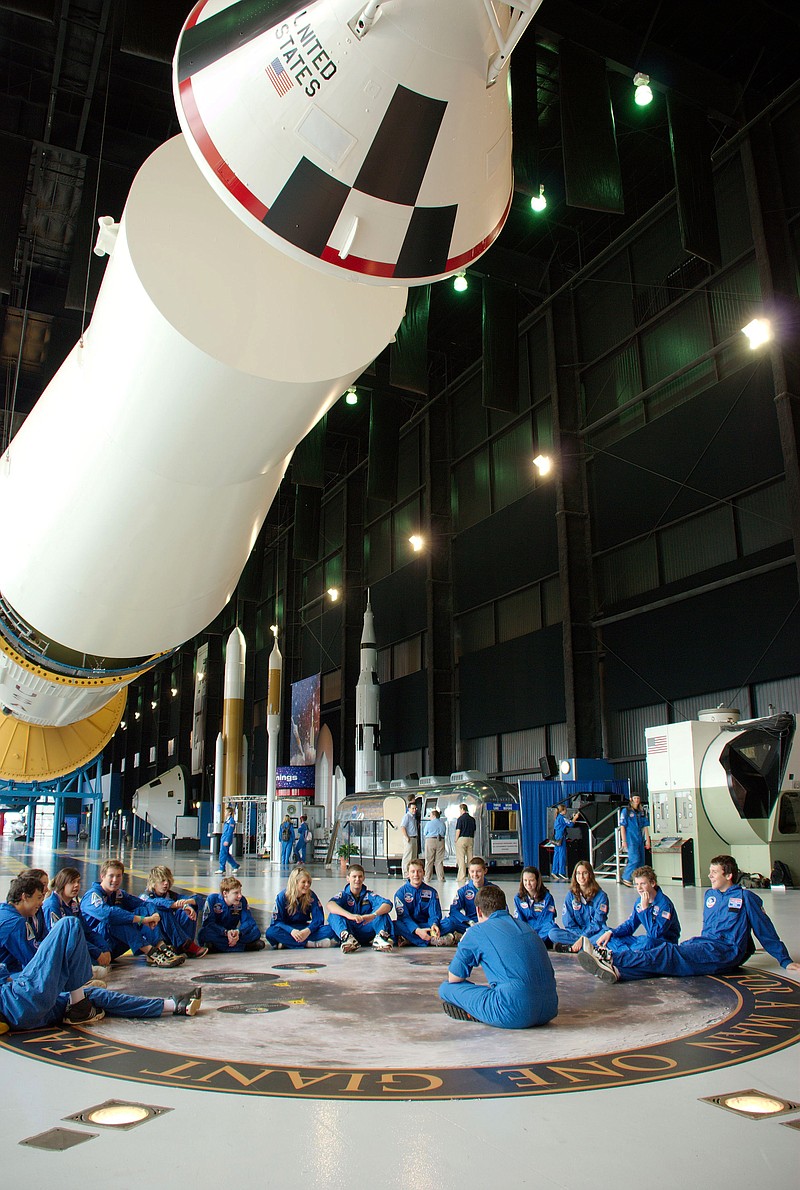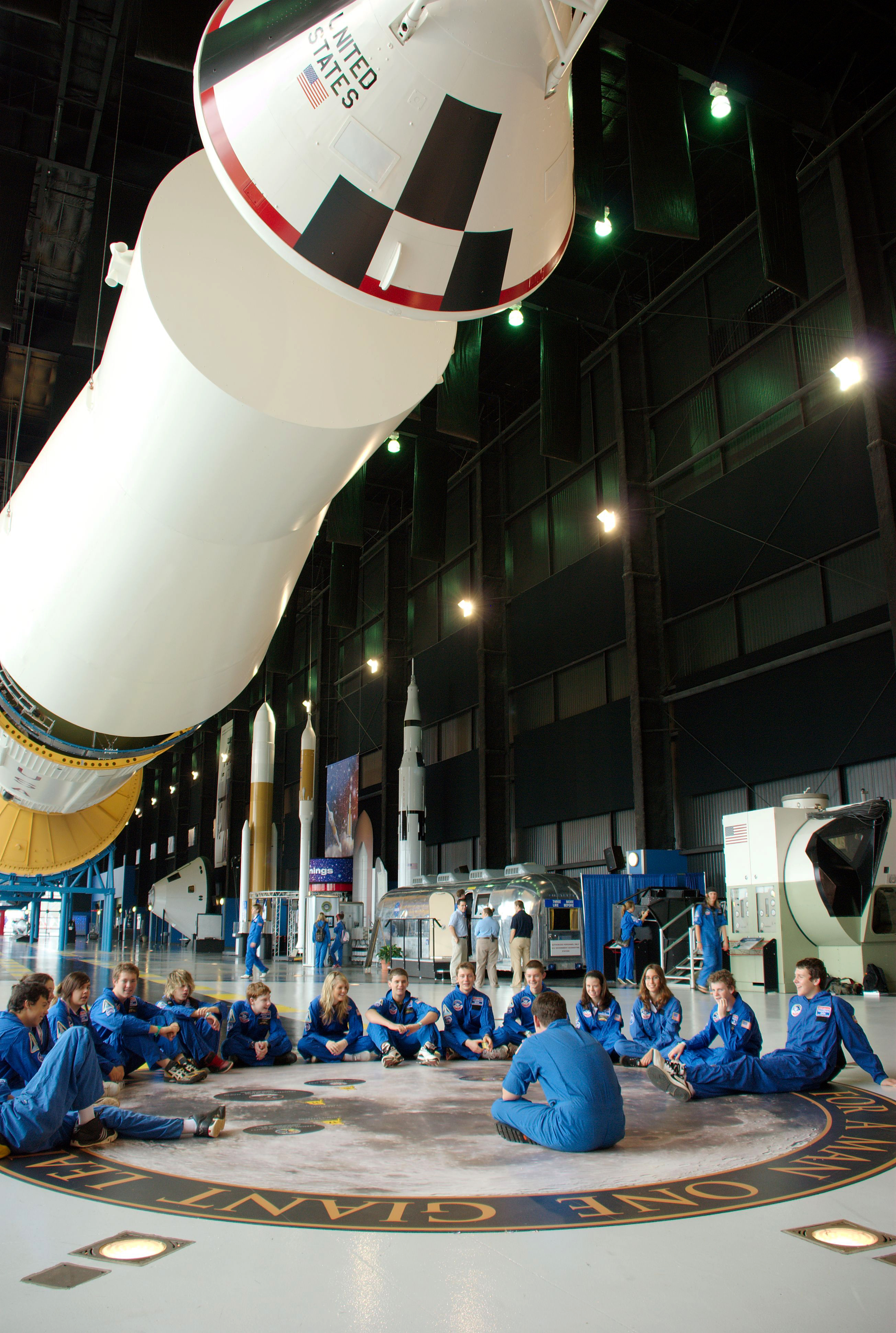It started with 118 men.
Scientists all, rockets mostly.
They came to the U.S. after World War II, part of Operation Paperclip, a program by the U.S. government to recruit German rocket scientists to jump-start our military rocket program, which was lagging behind Germany's even during the war. They first settled in Fort Bliss, Texas, but in 1950 they were relocated to the moribund Redstone Arsenal in Huntsville, Ala.
In the following decades, they transformed the sleepy North Alabama town of about 15,000 into a worldwide center for rocket research, turning it from the "Watercress Capital of the World" (yes, that was the town's claim to fame) to "Rocket City USA." In the 1950s and '60s, using slide rules, protractors and pencils, they designed rocket after rocket, from the first ones to break Earth's gravity to the gigantic ones that finally got us to the moon.
Fifteen families bought 37 acres on top of Monte Sano, a mountain just east of downtown that was quickly nicknamed "Sauerkraut Hill." The forested hills and plowed fields surrounding Huntsville reminded many of their homes in Germany and they settled firmly into the city, planting roots, raising families and becoming important members of the community.
These days, the influence of Germans in Huntsville is somewhat subtle. No lederhosen is in sight -- well, on most days, although the annual Oktoberfest at Redstone Arsenal would be an exception. No Alpine villages with gingerbread decorations dot the landscape. No beer halls -- although plenty of locally crafted beer is available. There are, however, a couple of restaurants that serve German food like schnitzel, rouladen and sauerbraten -- Hildegard's German Cuisine and Schnitzel Ranch.
But don't be fooled. The Germans' fingerprints are everywhere -- the U.S. Space and Rocket Museum, Space Camp, the Von Braun Astronomical Society and its planetarium, the Huntsville Symphony Orchestra, the wealth of high-tech companies that fill local Cumming Research Park, the second-largest research park in the U.S. (North Carolina's Research Triangle is the biggest).
"Von Braun" is the most obvious nod to Deutschland, a name found all over the city and honoring Wernher von Braun, who led the German rocket research team that created "Rocket City." He also helped revamp the Huntsville Symphony Orchestra, developed the educational link between the rocket scientists and the University of Alabama at Huntsville and was the spark behind Space Camp, the immersive weeklong camp that gives children and adults a taste of what it's like to be an astronaut.
Another Von Braun pet project -- the U.S. Space and Rocket Museum -- is by far the largest and most fascinating German stamp on Huntsville. It provides an exhaustive look at the history of the space program in America, from the early days of flight through the heady days of NASA in the 1960s and on to the space shuttle and International Space Station.
While the museum's main building is cluttered and confusing, with various exhibits tripping and falling over each other in a seemingly random pattern without any sense of flow, you can pass through it to get to the most awe-inspiring exhibit -- the Davidson Center for Space Exploration, an enormous building that easily fits a hanging version of the three-stage, 363-foot-tall Saturn V rocket, the one that helped us get to the moon.
Hours can be eaten up as you walk through the center, looking at displays that follow the process of refining rockets in the '40s and '50s to make them more reliable and accurate in warfare, then moving into a space race with Russia after it launched the first satellite, Sputnik, in 1956. From there, Huntsville's rocket program launched its most-remarkable work -- miraculous, even -- getting us to the moon less than 10 years after President John F. Kennedy threw the idea on the table as a rallying point for America in 1961.
They designed and built rockets they knew would never be used for real missions but were critical stepping stones to the ones that would. They created all-new wiring systems and mechanical parts, sometimes in their garages at night. They developed early computers to control the rockets and guide the spacecraft.
The most amazing fact -- in a building chock-full of amazing facts -- may be that the Apollo Guidance Computer, a thick square of metal and circuitry that got us to the moon, had a total of 64 kb of memory -- that's kilobytes, not megabytes. The smallest USB thumb drives now have about 10 gb of storage, or 6.7 million kilobytes.
You can put your hands into the gloves that astronauts used in space and try to do a simple mechanical task (it's very difficult). Take a look at rocks brought back from the moon. See how the Lunar Roving Vehicle -- the "dune buggy" that was taken to the moon on the last three Apollo missions -- was designed to be folded up into a square so it could fit in the lunar lander. The rovers are still on the moon, by the way, completely intact because there's no oxygen or water on the moon to deteriorate their metal.
If you want, you can also take a bus tour of NASA's Marshall Space Flight Center with stops at Redstone Arsenal, a still-used Army facility where the rocket scientists did a lot of their work, and the Payloads Operations and Integration Center, NASA's headquarters for the day-to-day running of the International Space Station. It played the same role during the space-shuttle program, too.
Contact Shawn Ryan at sryan@timesfreepress.com or 423-757-6327.

